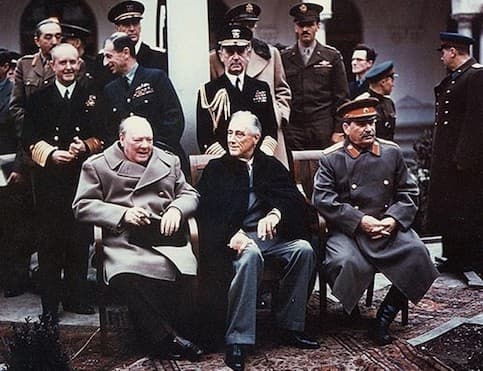The Great FDR Coverup
Steven Lomazow’s book raises an acute question: Is it really in the best interests of a country not to level with the American people about a president’s health?

‘FDR Unmasked: 73 Years of Medical Cover-ups That Rewrote History’
By Steven Lomazow
Kugler Publications, 346 pages
There was no autopsy of Franklin D. Roosevelt; there were laboratory requests using aliases for FDR such as F. David Rolph; and there were false and deceptive medical reports: This all reads like a whodunit cum conspiracy story that happens to be true.
It is not news that FDR did all he could to disguise his disabilities, creating the illusion, for example, that he could walk. He had a powerful upper body and steel braces on his legs that allowed him to stand and sort of shuffle forward with the help of someone at his side who seemed only to be steadying the president. Yet walking on his own was an impossibility.
A board certified neurologist, Steven Lomazow shows in excruciating detail how a battery of doctors, along with Roosevelt’s daughter, Anna, other FDR minions, and unwitting biographers, minimized “24 years battling swarms of maladies including polio’s ongoing crippling effects, life-threatening gastrointestinal bleeding, two incurable cancers, severe cardiovascular disease, and epilepsy.”
Like a detective, Dr. Lomazow looks for clues in the behavior and statements of political and medical professionals to figure out the reasons for the president’s frequent absences from public scrutiny, excused by sea voyages during which he was treated for a variety of disabling and life-threatening conditions. Dr. Lomazow discusses and produces photographs that show the surgeries on FDR’s face for treatment of a melanoma and FBI memoranda relating to his prostate cancer.
So extensive is FDR’s fraught medical history that it would have been helpful to have a chart, with one column listing the disease and the other column the symptoms, including acute abdominal distress and lapses, when the president would nod off and essentially freeze in place in what may have been epileptic seizures.
Quite aside from the complex, disturbing medical history Dr. Lomazow recounts, he cites firsthand accounts of figures who saw FDR entering his fourth term as a dying man, including Harry Truman, Joseph Kennedy, and General Douglas MacArthur. Some reports questioned FDR’s health, but in the main the press did its best to present optimistic features about the president’s condition even when he looked ghastly.
Why this all-encompassing conspiracy has persisted over several decades is not addressed in Dr. Lomazow’s book, and is perhaps beyond his remit. It would seem, though, that everyone had a vested interest in propping up FDR — who, in fact, had to be propped up as he became weaker and weaker and lost a devastating amount of weight, the likely result of both prostate cancer and heart disease.
The American president is all the republic has, as no monarch performs the sovereign’s ceremonial and reverential role. Only the president is sovereign, and to watch him fail is almost an unbearable sight. A monarch may go mad, as George III did, and the business of government will go on. Yet the president/emperor, so to speak, has to go on, even without clothes. FDR knew this, even though, as Dr. Lomazow remarks, the president confronted in public appearances the possibility of falling flat on his face.
Dr. Lomazow never seriously suggests that FDR’s physical sicknesses impaired his ability to govern. At Yalta, he was perhaps too quick to temporize with Stalin, the biographer argues, but this was not so much the weakness of a dying man as the contestable judgment of a president who did not see how to dislodge the Soviets from Eastern Europe while at the same time trying to get Stalin to join the new United Nations.
Dr. Lomazow’s book raises an acute question: Is it really in the best interests of a country not to level with the American people about a president’s health? How do such coverups, for example, shape biographical and historical accounts? What does it say about generations of biographers who have not been able to pierce the medical coverup that Dr. Lomazow documents in irrefutable particulars?
In sum, judging by Dr. Lomazow’s dogged investigation, it would seem that presidential biography has yet to mature into a reliable forensic examination of presidential leadership. We do not seem to be as distant from Parson Weems and the fable of the cherry tree as some might want to believe.
Mr. Rollyson’s work in progress is “Making The American Presidency: How Biographers Shape History.”

